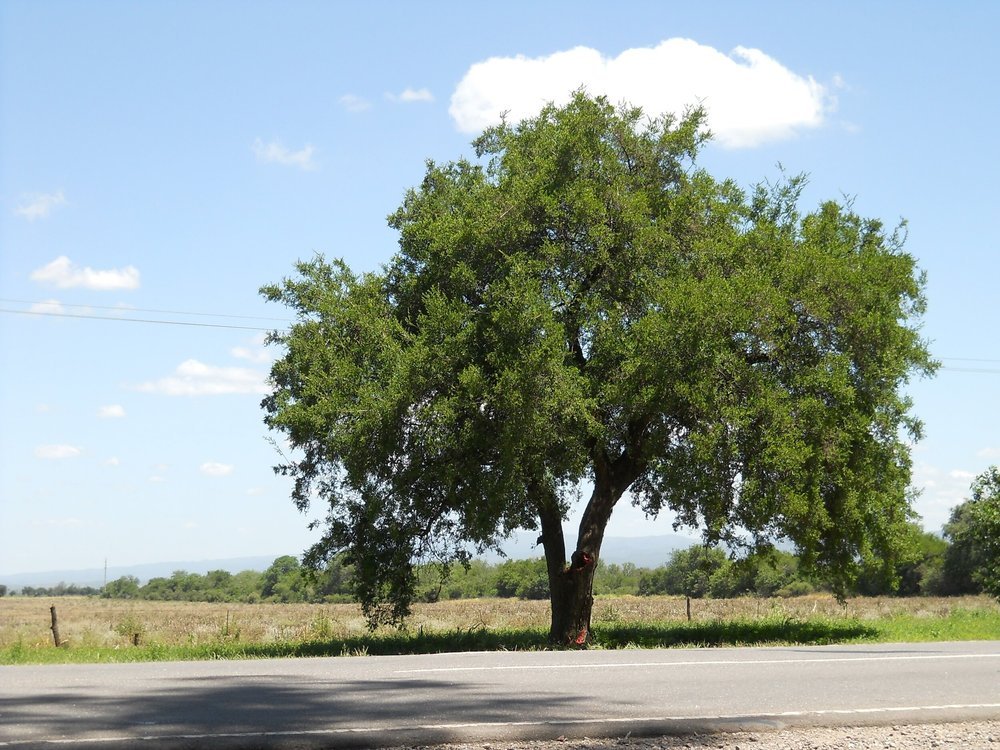Desert Hackberry
Celtis Pallida
Family: Cannabaceae
OTHER NAMES
Spanish: garambullo, cumbro, bainoro, garabato, granjeno, huasteco, vaino blanco, acebuche, capul, palo de guila, rompecapa
CHARACTERISTICS
Evergreen shrub or small tree, to almost 20 feet—usually a shrub in dry locations but becomes a tree on irrigation and in favorable conditions. Flowers in March to May with inconspicuous flowers. Flowers are followed by sweet, one-seeded, orange fruits.
LANDSCAPE USE
Screening shrub or with time, small tree
GROWING CONDITIONS
AN EXPLANATION OF TERMS USED
SUN part to full or even reflected heat
WATER moderate to low, will be slow growing with less water
SOIL tolerant of most soils, good drainage a plus
HARDINESS hardy to 15°F
BASIN middle to high
CONTAINER does ok but won’t again full size
NUTRITION low
MAINTENANCE very little, remove branches from high traffic areas
ECOLOGY
Flowers in March to May with nectar-rich flowers that are pollinated primarily by bees. Important habitat tree, fruit for birds and other animals, nectar rich flower for many insects. Larval host for the following butterflies:
American Snout (Libytheana carinenta)
Hackberry Emperor (Asterocampa celtis ssp. antonia)
Empress Leilia (Asterocampa leilia)
Texan Emperor (Asterocampa clyton ssp. texana)
Dusky Emperor (Asterocampa idyja ssp. argus)
Silver Emperor (Doxocopa laure ssp. laure)
Question Mark (Polygonia interrogationis)
ETHNOBOTANY
Fruits are edible to people, eaten raw or cooked into preserves. Wood is used for fuel and fence posts.
NATURAL DISTRIBUTION
Common along washes and on rocky and gravelly slopes, occasionally dominates bajadas, grows in Sonoran desertscrub and semidesert grassland from 1,500-4,000 ft. in Arizona, Texas (skipping New Mexico) and scattered throughout Mexico continuing as far south as central Argentina.
TAXONOMY AND NAME
This species is in the Cannabaceae, the hemp family. There are 73 species of Celtis with a cosmopolitan distribution.
Also known as Celtis ehrenbergiana.
Celtis is a Greek name for the old world hackberry trees. The species name pallida means pale—perhaps in reference to the lighter-colored fruits compared to the canyon hackberry.
Desert Hackberry is most often a shrub, only occasionally with prime conditions will it form a tree in our region. Photo by Jaxon Lane, iNaturalist
Desert Hackberry is evergreen, and spiny (canyon hackberry is thornless and deciduous). Photo by Lisa Travis, iNaturalist
The flowers are very small, photo by aacocucci, iNaturalist
The fruits on the desert hackberry are orange, and tasty. Photo by Ari Rice, iNaturalist





